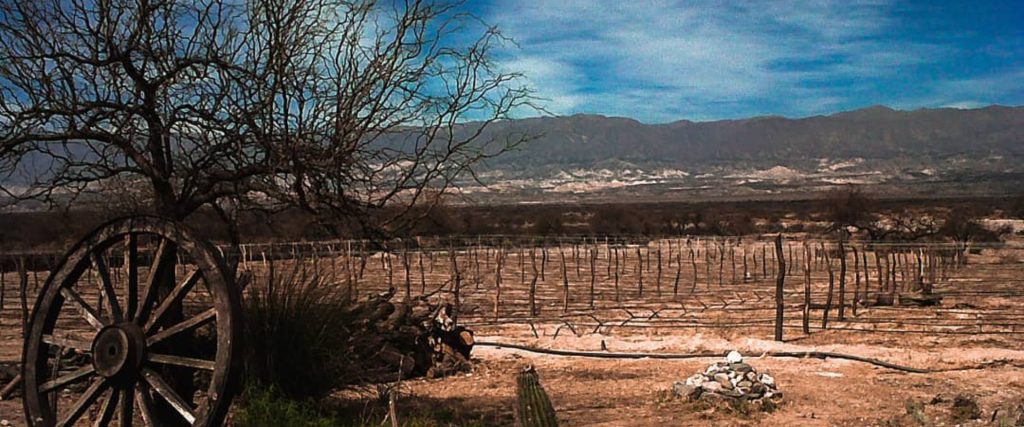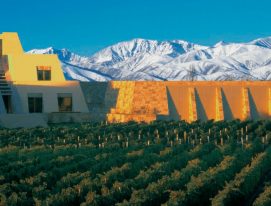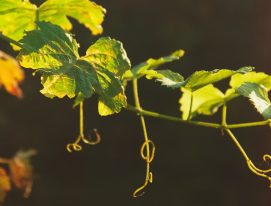Located in the heart of the Calchaquí Valley, the Argentine province of Tucumán has wine-producing hubs in the areas of Amaicha del Valle and Colalao del Valle, in the Department of Tafí del Valle. These 128 hectares represent 2% of the northern wine region of Argentina and 0.07% of the overall surface area under vine in Argentina, encompassing 19 viticultural establishments along a sixty-mile wine route that rises up Ruta Provincial 307 until it meets Ruta Nacional 40. The high altitude wines of the area are the most potent, grown at heights of between 5500 and 7300 feet.
Tucumán: the value of history
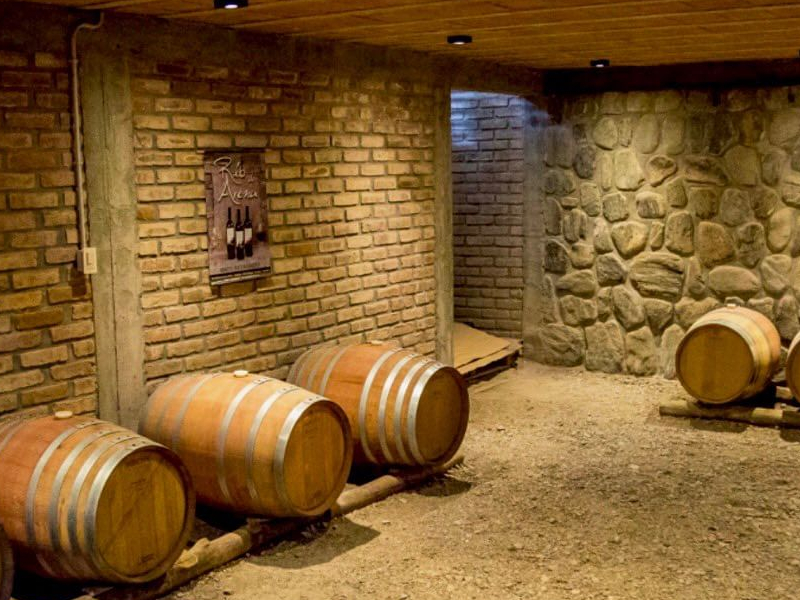
The height and thermal range, which can be as much as 20 degrees of difference between day and night, with deep, permeable soils, extensive sunlight and low rainfall are an ideal combination that is further enhanced by the “influence of the local aromatics from jarilla, lavender and paico, among other plants, which stick to the coating on the plants and so infuse the crop with the aromas and flavors of the hills,” says Silvia Gramajo, the owner of Bodega y Viñedos Luna de Cuarzo and President of the Chamber of Wineries and Vineyards of Tucumán.
“The Tucumán wine trail is located to the west of the province, along the legendary Ruta 40 in the Calchaquí Valley, and boasts a heritage enriched by indigenous cultures,” says Josefina Carro, the managing partner of Bodega Río de Arena and Vice-President of the Chamber of Wineries and Vineyards of Tucumán, describing a region where the soils are rich in silicate and quartz and one can find homemade, craft and mass-produced wines. It’s not just about the wine-tasting: tourists can also visit important archaeological and cultural sites that house the treasures of the Pichao Peoples, the Ruins of CondorHuasi, Talapazo and the Sacred City of Quilmes.
Torrontés, the star
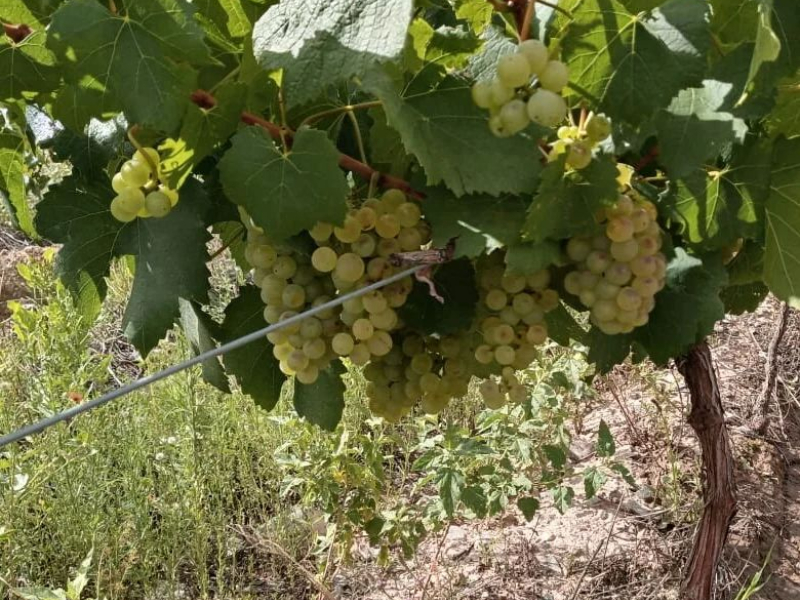
In the extreme conditions of Tucumán, the stand-out variety is Torrontés, whose versatility allows for a range of expressions: it is used to make late-harvest and dry wines as well as in blends, offering numerous options. “It’s the typical local variety, and is mostly found in Argentina, a cross between Muscat of Alexandria and Criolla Chica. In fact, fossils of the variety have been found elsewhere in the world but it’s only produced in Argentina and mostly in the north of the country, in our iconic Calchaquí Valley,” adds Carro.
Of course, the local conditions make for aromatic, intense wines with prominent tannins in the case of the reds. “They’re high-altitude wines, structured in the typical Calchaquí way. The varieties found in the area are Malbec, Cabernet Sauvignon, Tannat, Shiraz, and Cabernet Franc and we’re trying a few Rieslings too,” says Delia Cristina Díaz, Brand Ambassador at Altos La Ciénaga.
As is true of every wine region of Argentina, there are also notable sub-districts. Gramajo says, “the best region is Colalao del Valle, because of the versatility of the soils and the proximity of the Santa Maria River. Although it’s a very high valley, it produces intense Tannats and Syrahs from small vineyards. We think that the higher you go, the more expressive things get, especially when the winds are favorable. But it’s still being developed.”
Díaz agrees, saying, “Our wines come from Paraje La Ciénaga, which is eighteen miles to the southeast of Colalao del Valle, with an altitude of 7500 feet. In our case, we say that these are wines from extreme terroirs where the climate, soil and hard work combine to produce excellent quality, very healthy fruit.”
A lot still to be discovered
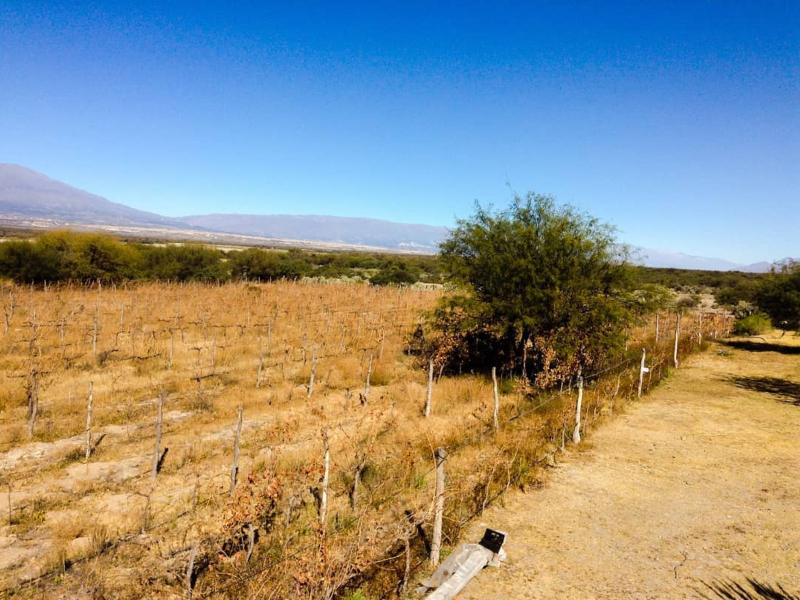
However, the Province of Tucumán is still being explored in terms of its different characteristics and production potential. “For example, in El Bañado, the area where our Río de Arena winery is located, we have discovered over the years that Torrontés does very well when the plants are over 45 years old. That’s also true of Malbec and we’re still studying other varieties,” says Carro.
It is to promote further development that the province has a Chamber of Wineries and Vineyards with the objective of “drawing more attention to the industry, promoting our wines and selling them more proactively. The Institute for Productive Development, IDEP, and the Tourism department are supporting us,” says Carro. “We are investing in the industry and are ready to do more training to improve our results. However, producers are still suffering from the effects of the drought and frosts of 2022,” says Díaz, highlighting the fact that the province has a large number of small producers who need the support of local bodies to grow.
“The new authorities made a promise to include the industry as a necessary activity in the strategic production plan. We’re working toward sustainable, organic vineyards and high-quality wines made at extreme altitude and positioning ourselves as a new Geographic Indication in the Calchaquí Valley,” says Gramajo, describing a province with a rich, unique landscape, an ideal climate for vineyards and high altitude wines with a great spirit and much to offer.

